The focus of our second meeting of the “Better Buses, Better Cities” book club was Chapters 2 and 3. Chapter 2 explained trade offs between frequency and coverage how “frequency is freedom” when it comes to providing service that people can plan their lives around. Chapter 3 centered on speed and reliability and how dedicated right of way and technology can permit faster bus service with low service disruptions.
To explore the frequency/coverage trade offs in Atlanta, the book club participants used the MARTA app to look up the weekday service level for all routes. The frequencies were sorted into four groups: less than 15 minutes, 20 minutes or more, 30 minutes or more, and 1 hour hour more. This photo from the activity shows the distribution of frequencies of the current MARTA bus network.
Out of over a hundred routes, there are a handful of routes with headways (the time between buses) of 15-minutes or better, the minimum level most consider to be “frequent” service. At this level, one is less dependent on time schedules and less impacted from missing the bus because the next bus is likely a few minutes away. However, the vast majority of routes are at 30-minute frequencies. At this frequency, trips must be planned and schedules consulted. Missing a bus that comes every 15-minutes or less is in stark contrast to missing one that is 30 minutes or more.
Based on the frequency analysis of MARTA’s current bus network, the participants discussed whether the service currently provided is adequate for metro Atlanta’s transit needs. The overwhelming response was no. And here’s why:
First, the current network emphasizes coverage over frequency, likely at the cost of ridership and reliability. The map below shows MARTA’s bus routes color coded by frequency. High frequency lines are in thick red lines and the low frequency routes are in thin blue lines. Areas served by the blue lines may reach a lot of people, but the low frequency does not make it easier for people to plan their life around transit.
Second, MARTA’s bus network is experiencing a similar issue faced by Houston’s bus network referenced in Chapter 2 before the redesign: changing neighborhoods. In Houston, many neighborhoods had changed demographically and produced areas of low-income households without adequate service. Similarly, Maria, one of the book club participants, noted how as development increased in her area, the level of transit service remained stagnant. As neighborhoods in metro Atlanta change demographics and population, the bus network should be adapted to better serve existing and new residents.
As Higashide mentions in Chapter 3, if the bus is frequent but unreliable day after day, riders will still be less likely to use it. The book mentions various strategies to implement speed and reliability enhancements to bus networks, however, our book club discussion primarily focused on the topic of pop-up bus lanes.
This tactic promotes installing temporary, low-cost bus-only lanes to test out their effectiveness for improving bus reliability. The City of Atlanta recently tested out a pop-up bike lane on 10th Street for one week, providing hope that bus lanes may receive the same treatment in the future. The consensus among the participants was one week is not long enough to truly assess performance. “Pop-ups should be six months to a year,” one partcipant chimed in, “If it doesn’t work, we take it out. You learn what we do right and what we do wrong.”
Participants had numerous ideas for where to put pop-up bus/transit lanes: along Edgewood Avenue for the Streetcar, Buford Highway for Route 39, and Clifton Corridor for multiple agencies. The question remaining was “So, what can we do to support the transit agencies and local governments to make pop-up bus lanes and other improvements possible?”
One idea is to help connect riders to service information through technology. Pigeon Transit was one such crowdsourced app that allows for transit users to report delays, crowds, construction, and more. Although this does not fix the root causes of service disruptions, it provides transparency into the system which allows riders to plan their trips with accurate information.
Another idea pitched is to equip riders with information through a regular publication on transit best practices, transit successes, and even the myths vs. facts of riding transit. This information can be used by anyone at neighborhood meetings, public hearings, or local debates to answer everything from “How many bus stops should we request for this street?” to “Should we ask for more frequency on this route?”
Finally, outside organizations, such as MARTA Army, are in a unique position to apply outside pressure where transit agencies may not be able to. Understanding from agencies where operational improvements are needed gives MARTA Army the opportunity to add an extra voice of support to conversations around bus performance.

